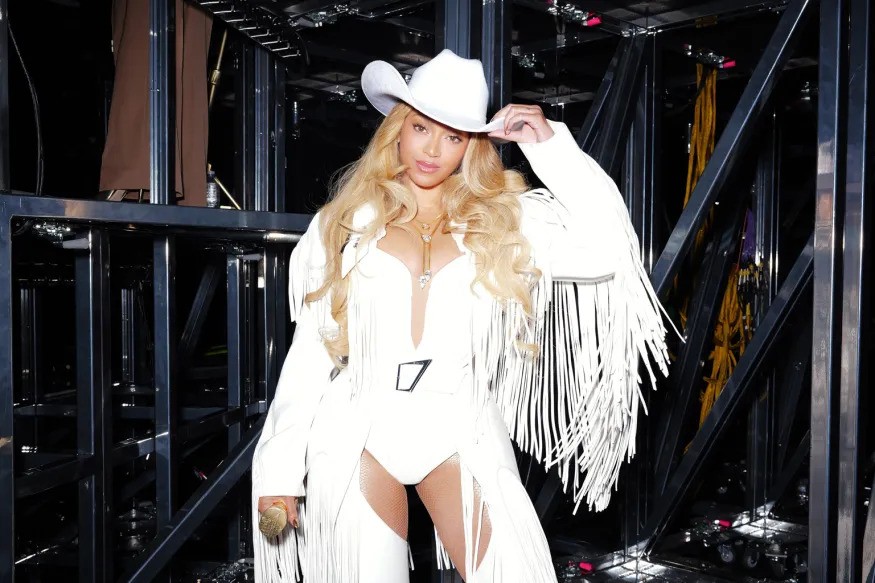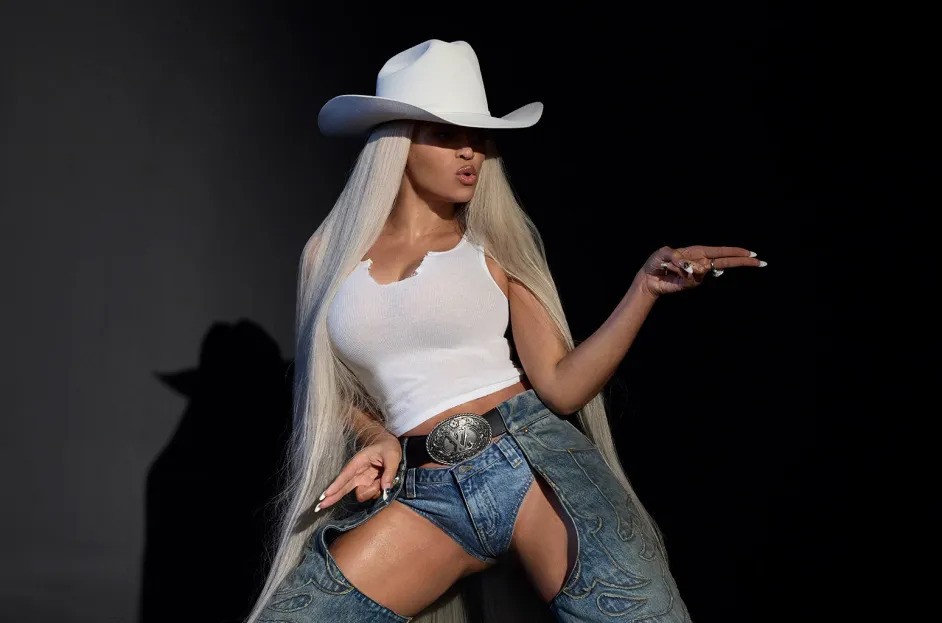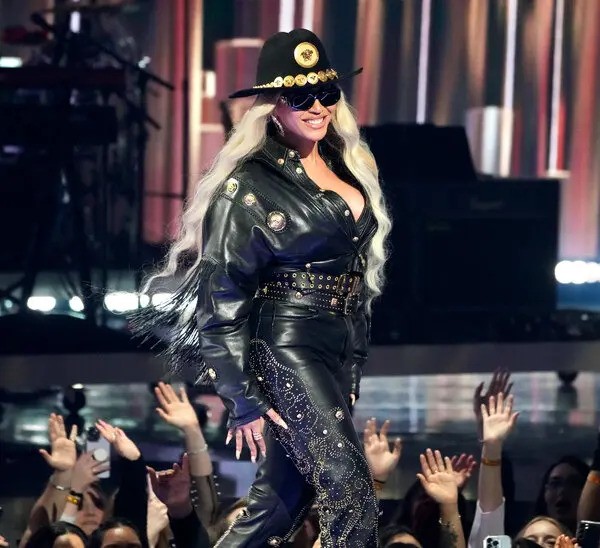When Beyoncé Knowles-Carter stepped onto the stage at SoFi Stadium in Los Angeles on April 28 to launch her Cowboy Carter and the Rodeo Chitlin’ Circuit Tour, she didn’t just kick off a concert — she sparked a movement. Now, as the tour enters its third leg with a five-night residency at New Jersey’s MetLife Stadium starting May 22, it’s clear this isn’t just another stadium show. It’s a moment. A redefinition. A cultural reckoning.
From viral memes to fashion moments that stop timelines, from tearjerking family performances to unexpected robotic comedy, Cowboy Carter is shaping up to be Beyoncé’s most dynamic live experience yet. It’s equal parts hoedown, high-art performance, and deeply personal diary. Here’s a deep dive into why this tour has the internet ablaze, the fans in awe, and pop culture forever changed.
Let’s get this out the way: Cowboy Carter is not Beyoncé’s “country era” — it’s something much bigger. This isn’t about genre-hopping or sonic cosplay. Beyoncé is reimagining country music through her own identity as a Southern Black woman, and reclaiming space in a genre that’s often failed to recognize the contributions of artists who look like her.
The set list, featuring 39 songs at launch, takes the audience on a sweeping ride through not just her discography, but also the history and heart of American music. From banjos to gospel harmonies to trap beats layered over steel guitars, Beyoncé has created a genre-fluid masterpiece and brought it to life in front of tens of thousands.
Each performance, particularly those in Chicago’s Soldier Field despite stormy weather and freezing temps, showed Beyoncé’s commitment to pushing through and connecting with her audience — no matter the obstacles.
One of the most viral elements of the tour? None other than Beyoncé’s 13-year-old daughter, Blue Ivy Carter.

Blue’s evolution from “special guest” to lead performer is one of the most heartwarming story arcs unfolding on the Cowboy Carter tour. Every night, she struts onto the stage like she’s been performing for decades — and perhaps, in a way, she has. From choreography that commands attention to her confidence and stage presence, Blue isn’t just joining her mom on tour; she’s owning it.
Fans have lovingly dubbed her “Manager Blue” thanks to her authoritative poise and ability to seemingly shape the tour’s direction. One clip of her gently but expertly navigating a moment where her earring got caught in Beyoncé’s hair instantly went viral, solidifying the idea that Blue is not just helping out — she’s in charge.
And let’s be real: if you’ve seen the “Diva” moment live — where Blue hits the stage and Beyoncé scans the crowd for a worthy recipient of the title — you know it’s electric.
While Blue Ivy might be the seasoned pro, it’s Beyoncé’s 7-year-old daughter Rumi who’s stealing hearts and summoning tears every night.
During the performance of “Protector,” a track layered with maternal warmth and tenderness, Beyoncé is joined by both of her daughters. The stage transforms into a visual tribute to motherhood, legacy, and love.
Rumi’s presence is brief but powerful. Her innocent energy and radiant smile light up the stadium — a stark, beautiful contrast to the grandeur and drama of the rest of the show. When the montage of Beyoncé with her children rolls right after the performance, it becomes an emotionally charged moment that leaves the audience sniffling, cheering, and feeling like they just witnessed something sacred.
In true Beyoncé fashion, no detail is too small — not even a robot pouring whiskey.
At her final Los Angeles show, a robotic arm was tasked with pouring her a glass of SirDavis whiskey. Except… it missed. In front of tens of thousands, the robot flubbed its one job. And the internet loved it.
Memes exploded overnight. Fans started “robot watch” on social media. Would it pour the whiskey right tonight? Would Beyoncé throw it shade? It became an unexpected subplot of the tour.
To her credit, Beyoncé leaned into the moment. At her Chicago shows, she gave the robot a playful side-eye and even cracked a smile as it successfully poured her drink — this time, without spilling. Her nod of approval and mock-serious smirk turned what could’ve been a tech fail into comedic gold.
Beyoncé has always embraced ballroom culture, and this tour is no exception. Enter Honey Balenciaga, a standout from the Renaissance World Tour, who brings the heat to Cowboy Carter in a solo number that feels like a wild rodeo-meets-runway showdown.
In a candid post before the Chicago shows, Honey shared her artistic struggle to find the right energy for this new Beyoncé era: “I was so wild and dangerous before. Now I want to show growth. This is Cowboy Carter.”
And she delivered. Her performance in Chicago — fierce, fluid, and rooted in ballroom excellence — sent fans into a frenzy. It was a reminder that the tour doesn’t just celebrate Beyoncé; it celebrates the communities that inspire her and the art forms she uplifts.
If you came to a Beyoncé concert expecting a few sequins and backup dancers — think again. The Cowboy Carter tour is a fashion fantasy where high couture gallops into the Wild West.
Each night, Beyoncé’s wardrobe reinvents Western glam. Think: diamond-studded chaps, custom cowboy boots, rhinestone-encrusted fringe, and corsets that look like they were stitched by the gods. But beyond sparkle and spectacle, her outfits carry deeper messages — a salute to Black cowboys, a nod to Americana through a radical Black feminist lens, and an ongoing challenge to the fashion world’s Eurocentric gatekeeping.
Social media accounts are dedicated solely to tracking her nightly looks. And fashion houses are already scrambling to keep up. Beyoncé has turned every city on this tour into a mini fashion week — with a saddle.
A throwback fan favorite has returned in style. During her performance of “Diva,” Beyoncé playfully scans the crowd, shouting out — or dissing — fans based on their diva credentials.
“She ain’t no diva!” she sings while pointing to someone not serving enough energy. But it’s all love — because she quickly turns around and exclaims, “She’s such a diva!” when spotting a fan who fits the bill.
It’s interactive, it’s hilarious, and it showcases Beyoncé’s unmatched ability to blend stadium-scale performance with intimate fan engagement.

Beyond the sold-out stadiums, jaw-dropping choreography, and meme-worthy moments, the Cowboy Carter tour is deeply personal — not just for Beyoncé, but for her fans. It’s a story of legacy, family, and reclaiming space. It’s a celebration of being Southern and Black and proud. It’s a masterclass in artistic control and cultural commentary — all wrapped in a glittering rodeo bow.
This tour isn’t just about music. It’s about moments.
It’s about a mother bringing her daughters into her world on their terms.
It’s about making a robot pour whiskey just to see if it gets it right this time.
It’s about dancers like Honey Balenciaga turning a stage into a battleground for artistic truth.
It’s about fans crying in their boots when Rumi flashes a smile.
It’s about all of us — experiencing joy, catharsis, fashion, culture, and community in a time when we desperately need it.
The Cowboy Carter tour continues its nine-city journey through the U.S. and Europe, with Beyoncé breaking records left and right. She already holds the record for the most dates played at SoFi Stadium in Los Angeles. And with her MetLife Stadium shows in New Jersey coming up on May 22, 24, 25, 28, and 29, the buzz is only growing louder.
The tour will wrap in Las Vegas on July 26 — and if the past few weeks are any indication, that finale is going to be legendary.
With Cowboy Carter, Beyoncé isn’t just revisiting her Southern roots — she’s replanting them in new, revolutionary soil. She’s proving that country music, fashion, motherhood, technology, and Black identity don’t live in separate silos. They intersect, they dance, and they ride — together.
This tour is Beyoncé’s rodeo, yes. But she’s invited all of us to ride along. And from the looks of it, we’re never getting off this horse.
